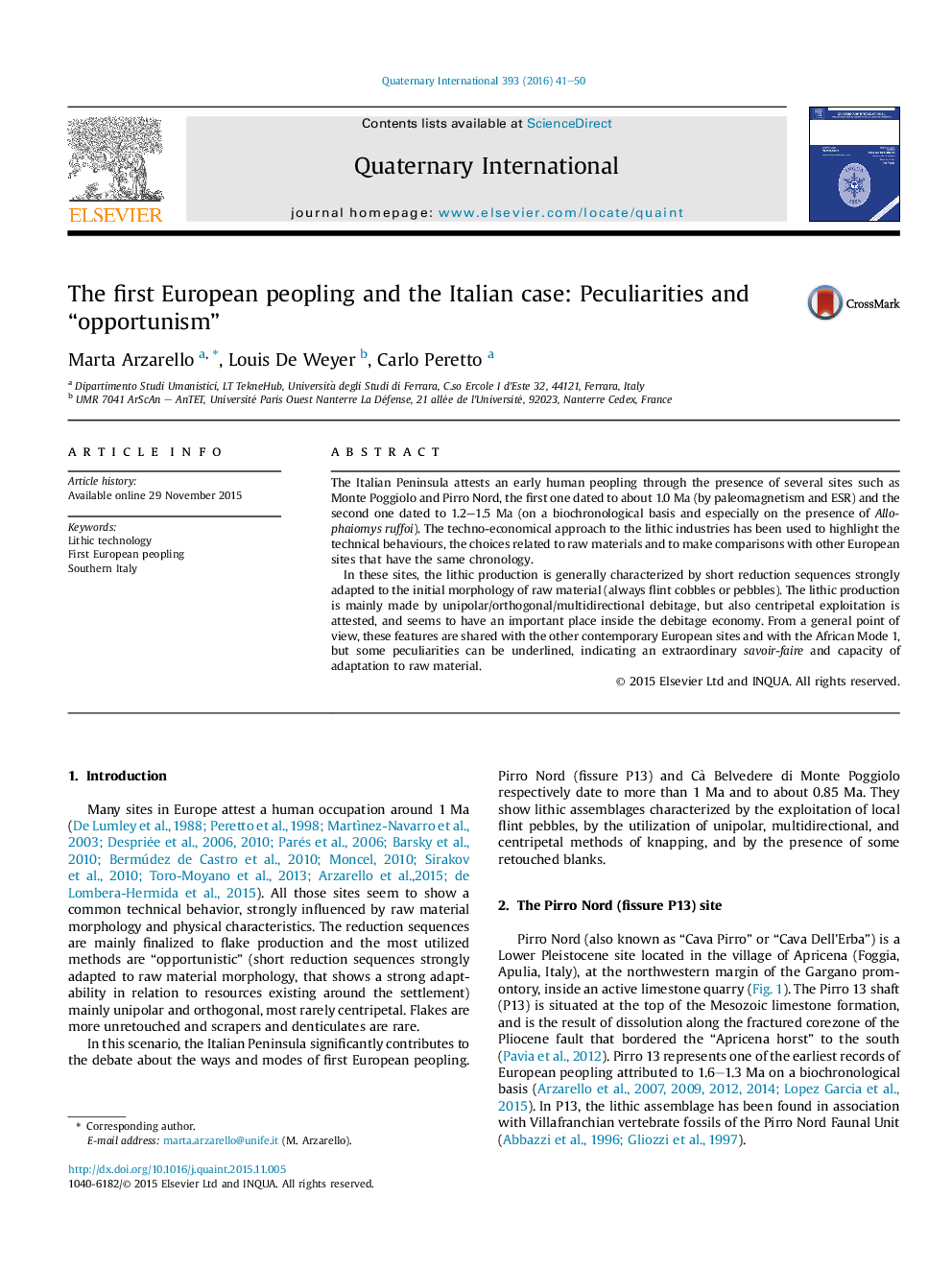| کد مقاله | کد نشریه | سال انتشار | مقاله انگلیسی | نسخه تمام متن |
|---|---|---|---|---|
| 1040325 | 1484105 | 2016 | 10 صفحه PDF | دانلود رایگان |
The Italian Peninsula attests an early human peopling through the presence of several sites such as Monte Poggiolo and Pirro Nord, the first one dated to about 1.0 Ma (by paleomagnetism and ESR) and the second one dated to 1.2–1.5 Ma (on a biochronological basis and especially on the presence of Allophaiomys ruffoi). The techno-economical approach to the lithic industries has been used to highlight the technical behaviours, the choices related to raw materials and to make comparisons with other European sites that have the same chronology.In these sites, the lithic production is generally characterized by short reduction sequences strongly adapted to the initial morphology of raw material (always flint cobbles or pebbles). The lithic production is mainly made by unipolar/orthogonal/multidirectional debitage, but also centripetal exploitation is attested, and seems to have an important place inside the debitage economy. From a general point of view, these features are shared with the other contemporary European sites and with the African Mode 1, but some peculiarities can be underlined, indicating an extraordinary savoir-faire and capacity of adaptation to raw material.
Journal: Quaternary International - Volume 393, 30 January 2016, Pages 41–50
